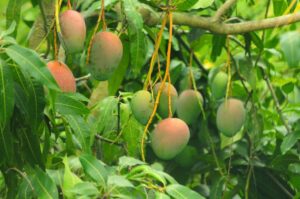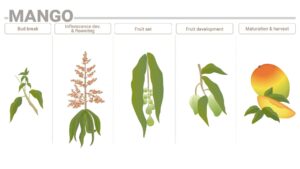The effects of foliar spray application of KNO3, low biuret urea, GA3 (a gibberellin), CPPU (a synthetic cytokinin) and NAA (a synthetic auxin) on fruit retention, average fruit weight and yield at harvest, and monetary return taking currently obtained prices in account were evaluated. For the experiment 10-year-old Tommy Atkins mango trees were selected in an orchard at Constantia in the north-eastern Transvaal, South Africa. Spray applications were made while the trees were in flower or subsequently, just prior to the commencement of fruit drop. Potassium nitrate was applied twice on August 28 (panicles in shoot: 3-15 cm) and on September 11 (panicles 50 to 100% anthesis) at a rate of 4 kg/100 liter water. LB urea was applied at 1% (w/v), GA3 at 40 ppm, NAA at 40 ppm and CPPU at 10 ppm, and applications were made singly or in combination. Of all the treatments applied during flowering, KNO3 application was the only treatment to noticeably increase fruit retention, average fruit mass, yield and monetary return (Figure 1). Spray applications of potassium nitrate can be employed to improve the yield of Tommy Atkins mango.

Figure 1. The effect of KNO3 spray applications on Tommy Atkins mango trees.



